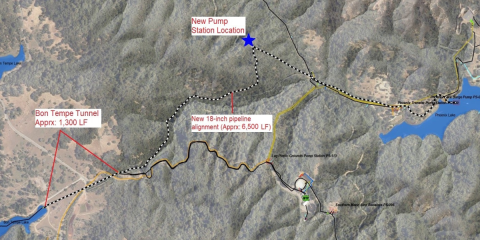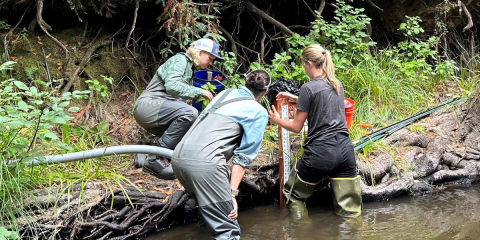Conservation – Water Efficiency Master Plan Implementation, AMI, Water Loss Control
Water conservation continues to be a cornerstone of the roadmap. Based on updated supply demand projections and historical customer performance, Marin Water projects that, long-term, water efficiency will reduce the District's overall 8,500 AFY water supply goal by 2,000 AFY.
Water Efficiency Master Plan Implementation
Marin Water is continuing its strong conservation efforts and will work to gain additional savings through implementation of the strategies in the District’s comprehensive and innovative Water Efficiency Master Plan.
Advanced Metering Infrastructure (AMI)
Advanced Metering infrastructure (AMI) is technology which allows customers to receive real-time data from their water meters, helping them to detect leaks or abnormal water usage and gain greater understanding of their household or business water use patterns. Marin Water is currently testing various types of this technology as it plans for a service area-wide rollout of AMI by 2030.

Water Loss Control
Marin Water has long operated a proactive Leak Reduction Program to identify and address in-system water loss. A recent program review identified new opportunities to strengthen this work, several of which are now being implemented or tested as part of the Water Supply Roadmap.
Acoustic Leak Detection Pilot
The District’s core approach uses leak noise amplifiers to manually survey about 200 miles of pipeline each year, detecting leaks that might otherwise go unnoticed. While this traditional method is effective, Marin Water is now piloting newer acoustic leak detection technologies in two neighborhoods – Santa Venetia and Spinnaker Point. The pilot is testing three types of systems:
- Hydrant-based sensors, which detect leaks in water mains between hydrants.
- Meter-integrated sensors, installed near customer meters to monitor nearby pipelines.
- Valve-based sensors, that are attached to valves in the distribution system and can detect leaks in the pipelines.
The different systems are based on similar technologies and are being deployed in both neighborhoods to assess their performance, responsiveness, and potential for broader use.
 Translate
Translate




